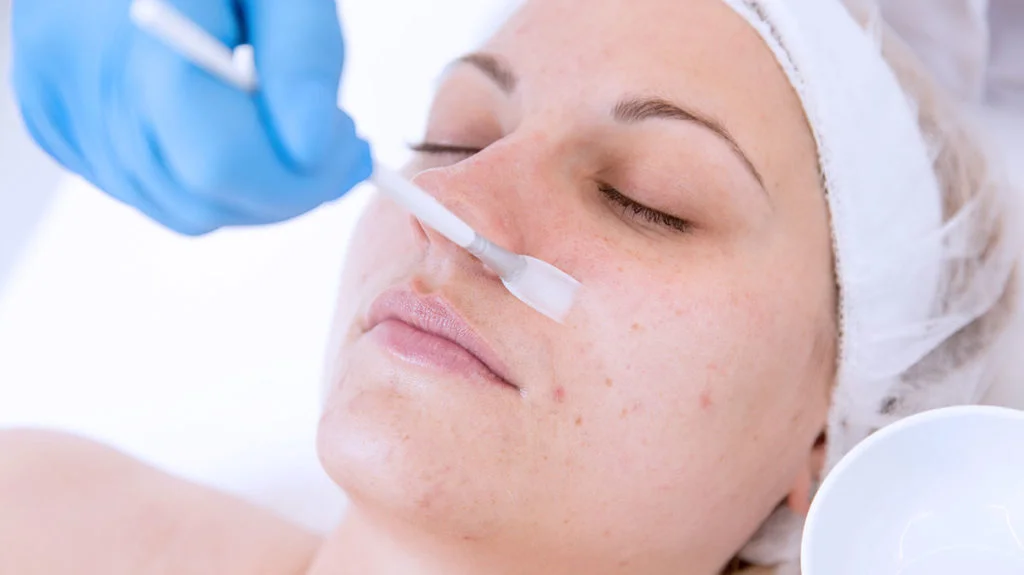
A Chemical Peel Is What?
Chemical peel skin cancer treatment involves a controlled method of exfoliating the skin using an acidic solution to remove the top layer.
- Human skin consists in three layers:
- Top, or epidermis
- Dermis, the middle
- Fat (bottom)
A chemical peel in a spa environment just influences the top layer of the skin. Stronger chemical peels let doctors remove pigment and aberrant skin cells.
For What Reason Would One Use a Chemical Peel?
Aesthetists utilize chemical peels to enhance overall skin appearance, and chemical peel skin cancer treatments can also help address certain precancerous skin conditions. Chemical peels can even balance skin tone and erase fine lines, age spots, wrinkles, and acne scars by eliminating the top layer of dead skin.
Chemical peels are another tool used at Wall Dermatology to treat actinic keratosis, a precancerous skin development. These peels also assist with skin issues resulting from cancer therapy.
Among the few instances are:
- Extreme acne brought on by targeted treatments (such as epidermal growth factor inhibitors) or chemotherapy
- Melasma, a change in skin color brought on by chemotherapy
Available kinds of chemical peels?
Indeed, there exist three basic forms of chemical peels:
- Present
- Middle depth
- Profound
Dead skin cells from the epidermis’ surface are removed in a superficial peel, therefore exposing fresh, healthy skin.
Deeper, past the superficial skin layers, a medium or deep peel starts to impact the dermis and may be used in chemical peel skin cancer treatments for certain precancerous lesions. You see raw flesh in this layer when you scrape your knee. These stronger peels start acting on the layer under the epidermis and influence its whole thickness.
Can Chemical Peels Correct Sun Damage?
Not fully. The kind of peel you use will help you to eliminate damaged skin cells and enhance the appearance of sun-damaged skin. But chemical peels just address the surface of the skin.
Deeper than a peel can reach is UV damage, which is often a factor in skin conditions addressed through chemical peel skin cancer treatments. Sunscreen is therefore crucial, and one should stay away from tanning beds.
Following a chemical peel, is the skin flaking or blistering?
After a chemical peel, your skin should never blister, even during chemical peel skin cancer treatments. Should it do something, something went wrong.
A few folks hardly peel at all. Usually three to four weeks following the peel, some may find skin peeling like that following a sunburn. Often around the nose, peeling is more obvious.
Which Acids Find Use in Chemical Peels?
For both superficial and medium-depth peels in our practice, we apply salicylic and trichloroacetic acids, which are also used in chemical peel skin cancer treatments. A few other acids occasionally used include these:
- Glycolic acid: Found in numerous retail items, this plant-based acid
- Salicylic acid unclogs pores and treats acne.
- Jessner’s solution combines resorcinol with ethanol.
- Lactic acid: Likewise to glycolic acid
- Deep peels call for phenol, but we avoid it as it can aggravate cardiac conditions and scarring.
Once trichloroacetic acid comes into touch with skin, it is difficult to neutralize.
The acid employed and the length of time a peel sits on the skin determine its strength.
Can experts in dermatology suggest chemical peels?
Indeed, if it makes logical sense for the patient’s situation. Cancer or other medical treatments might produce skin issues that chemical peels can address.
Those Who Should Not Get a Chemical Peel
Chemical peels are something most people, regardless of skin tone, can have. However, we steer clear of them if the skin is injured or inflammatory, as following radiation treatment.
What Chemical Peels Pose Risk?
Side effects could include of:
- Skin sensitivity or agony
- Scarring
- Blistering
- Changes in skin tone—lighter or darker
- Greater solar sensitivity
Usually safe and effective, chemical peels performed by a qualified practitioner.
How Should One Care for Skin Following a Chemical Peel?
Post a chemical peel, always apply sunscreen. Your skin will be more sensitive, much like that of a baby.
Wait at least one week following your peel if you intend to wax the same area.
If you take retinoids at home, halt one week before your peel and wait another week following before beginning again. Early use of them could result in scars or burns.
How Long Do Effects From a Chemical Peel Last? How Often Would You Want One?
- Its depth determines this as well.
- Store-bought peels might have to be applied every one to two weeks.
- One to two months are likely from a superficial in-office peel.
- A medium-depth peel could keep for three months or more.
Effective Treatment for Cancer Skin Peeling at Wall Dermatology
Protect your skin today with Wall Dermatology’s expert care. If you’re dealing with cancer skin peeling, our specialists provide personalized treatments for healing and prevention. Contact us now!
